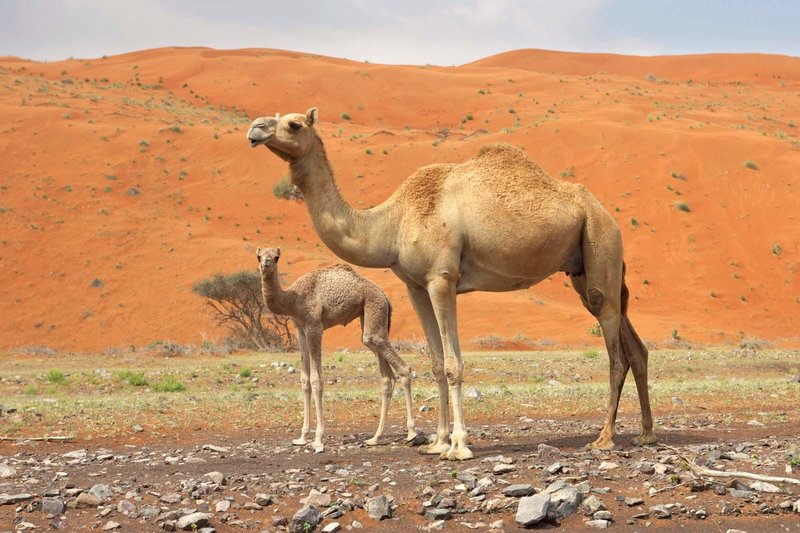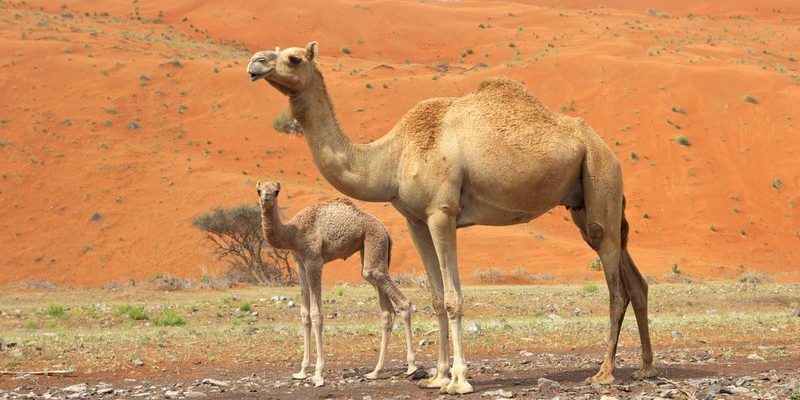
Dromedaries are uniquely adapted to living in arid environments. With a single hump on their backs, they are perfectly designed to store fat, which helps them survive in places where water and food can be incredibly scarce. Think of them as the ultimate survival experts of the desert. So, where exactly do these resilient animals thrive? Allow me to explain.
The Natural Habitat of Dromedaries
Dromedaries primarily inhabit desert regions, but their adaptability allows them to thrive in various arid environments. You’ll often find them in the Sahara Desert of North Africa and the Middle Eastern deserts, like the Arabian Peninsula. These areas are characterized by extreme temperatures, limited rainfall, and sparse vegetation.
An interesting aspect of dromedary habitats is their ability to travel long distances in search of food and water. They can roam up to 10 miles in one day! This nomadic lifestyle suits their environment, where resources can be spread out. Picture them wandering the dusty landscapes, using their excellent sense of direction to navigate toward the next oasis.
Another not-so-obvious habitat for dromedaries is the semi-desert areas, which might not seem ideal at first glance. These regions, often found near the edges of true deserts, have some greenery and occasional rainfall. Here, dromedaries can graze on shrubs and other tough plants. Their unique digestive systems allow them to extract moisture and nutrients from plants that other animals might avoid. It’s a classic example of evolution at work!
Climate Adaptations and Survival
Dromedaries are masters of surviving in harsh climates. They can tolerate temperatures that soar well above 100°F (38°C) during the day and still function effectively. Their thick fur insulates them from heat while allowing sweat to cool them down. Honestly, it’s like having their built-in air conditioning!
You might be wondering how they manage to go without water for extended periods. Dromedaries can lose up to 25% of their body weight without severe consequences. They have an amazing ability to conserve water—everything from their efficient kidneys to being able to withstand fluctuations in body temperature helps them stay hydrated longer than most animals.
Even when they do drink, dromedaries can gulp down large amounts of water in one go—up to 30 gallons in just a few minutes. That means they can take advantage of rare rainfall or oases whenever they encounter them. It’s a pretty neat trick that fits their lifestyle perfectly.
Geographical Distribution of Dromedaries
Dromedaries are predominantly found in North Africa and the Middle East, but their range extends beyond these regions. They are also present in parts of Central Asia, like Afghanistan and parts of Pakistan. In recent years, they have even ventured into countries like Australia, where they were introduced for transport and farming.
The dromedary population is particularly high in countries such as Saudi Arabia, Egypt, and Sudan. In these places, they are not just working animals; they also play a vital cultural and economic role. Many communities rely on them for transportation, milk, and meat, essentially making them part of the family.
As the climate changes, dromedaries may adapt to new environments. Some have been spotted in regions facing drought, helping local communities navigate challenging terrains. Their adaptability opens up exciting potential for their future distribution, especially as people seek sustainable ways of living in dry areas.
How Dromedaries Interact with Their Habitat
Dromedaries have developed a fascinating relationship with their environment. They impact their ecosystems in unique ways, mainly through their grazing habits. By eating tough vegetation, they help maintain plant diversity in their habitats, ensuring a healthy balance within their ecosystem.
Since they can withstand long periods without food and water, their presence also supports other animals in the area. For instance, their droppings provide essential nutrients to the soil, promoting plant growth that other animals can benefit from. This creates a cycle that supports life in some tough environments.
You might think of dromedaries as simply existing in their surroundings, but they actively shape it—like an artist painting their canvas. The delicate balance between them and their habitat is a beautiful example of nature working in harmony.
Human Impact on Dromedary Habitats
Unfortunately, the habitats of dromedaries are facing challenges due to human activities. Urbanization and agricultural expansion are encroaching on their spaces. As more land is transformed for farming or development, dromedaries are losing their natural habitats, which can affect their populations.
Additionally, climate change poses significant risks. Rising temperatures and shifting weather patterns can lead to the depletion of resources these animals need to survive. Imagine trying to live somewhere that used to provide everything you needed but is now becoming barren. It’s a serious concern for dromedaries—and for the humans who rely on them.
Conservation efforts are becoming increasingly important to protect these incredible creatures and their habitats. Organizations work to educate communities about sustainable practices that can coexist with dromedaries, ensuring their survival and preserving the cultural heritage linked to these animals.
Future of Dromedaries in Changing Environments
As we look to the future, the presence of dromedaries in our changing world offers both hope and challenges. Their adaptability may help them navigate new landscapes as their traditional habitats shift or shrink. Plus, they could play a crucial role in sustainable practices in desert and semi-desert areas.
It’s essential for communities to recognize the value of dromedaries beyond their economic contributions. They are living symbols of resilience and adaptation, perfect for inspiring sustainable living in harsh environments. Supporting conservation efforts ensures that future generations can enjoy the companionship and utility of these animals.
Honestly, the future of dromedaries is intricately tied to the choices we make today. By promoting awareness and supporting conservation efforts, we can help secure a place for these remarkable creatures in a world that’s changing rapidly.
In summary, dromedaries are a testament to nature’s ingenuity, thriving in some of the planet’s harshest climates. Their habitats span deserts and semi-arid lands, and they play a crucial role in the ecosystems they inhabit. As we navigate environmental changes, it’s essential to consider how we can protect these amazing animals and the places they call home.

